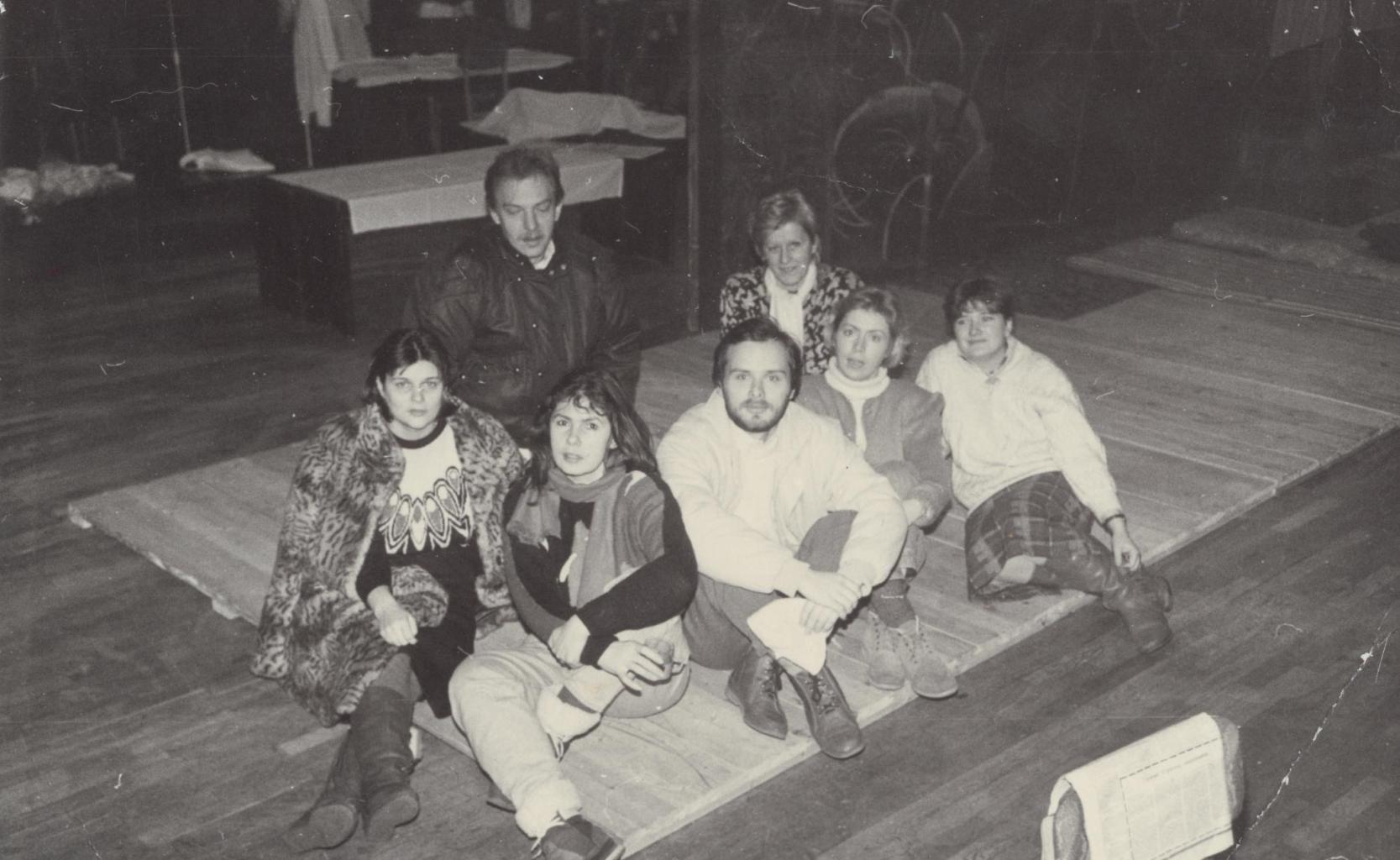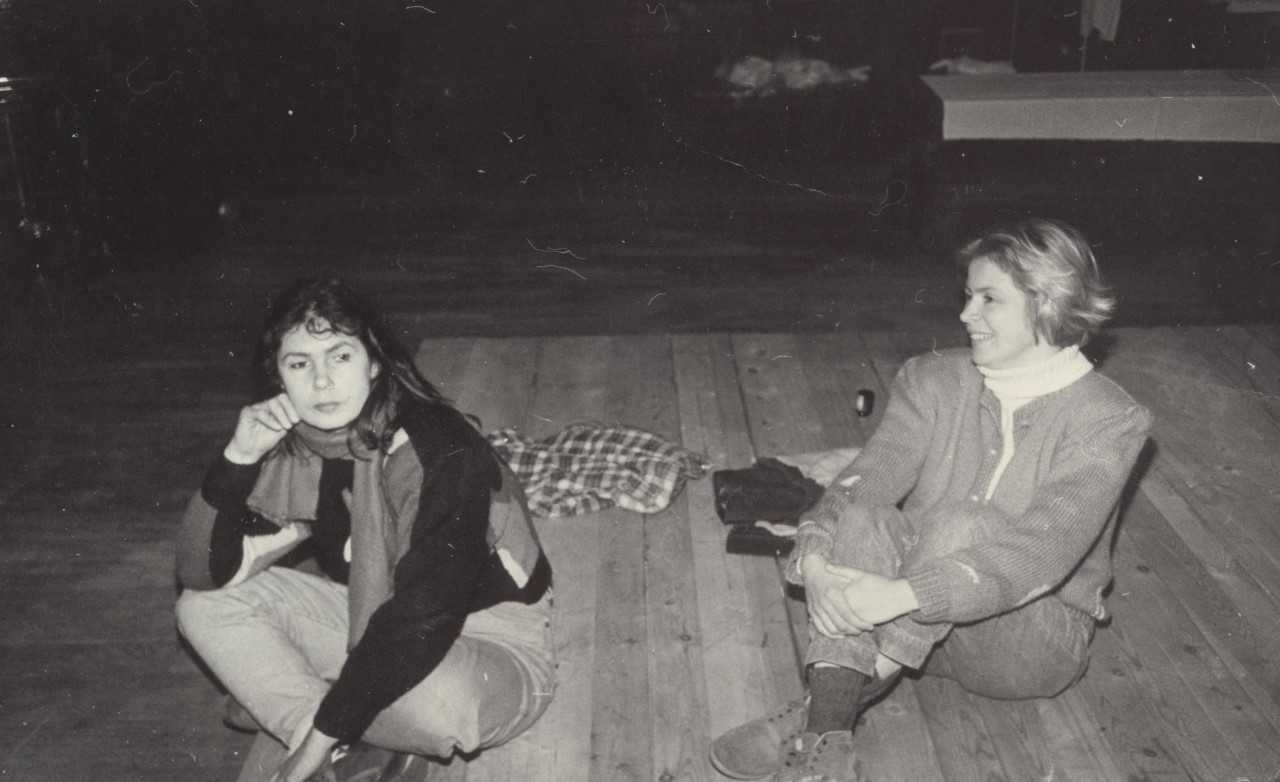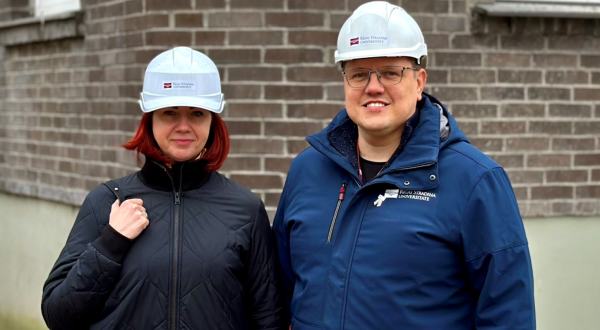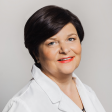Professor Ilze Akota Looks Back at the 1991 Barricades
In January 1991, Rīga Stradiņš University (RSU) Professor Ilze Akota, who is now the Head of the Department of Oral and Maxillofacial Surgery, was the senior laboratory assistant at the Department of Surgical Stomatology of the Medical Academy of Latvia (now the RSU Department of Oral and Maxillofacial Surgery). She organised the hospital’s therapeutic work and the Clinic of Stomatology’s outpatient department.
We responded to the call and went to St. Saviour's Anglican Church where a medical aid post was being set up. On the first day, we were on standby, waiting to see if anyone would need medical assistance. There was a great deal of uncertainty and we had no specific tasks.
 St. Saviour's Anglican Church, January, 1991. First row, from the left: Ilze Akota, Ina Freimane, at the back: Juris Spruģis and other colleagues from the hospital and outpatient department of the Clinic of Stomatology. Photo from private archive
St. Saviour's Anglican Church, January, 1991. First row, from the left: Ilze Akota, Ina Freimane, at the back: Juris Spruģis and other colleagues from the hospital and outpatient department of the Clinic of Stomatology. Photo from private archive
 St. Saviour's Anglican Church, January, 1991. From the left: Ina Freimane, Dace Ošleja. Photo from private archive
St. Saviour's Anglican Church, January, 1991. From the left: Ina Freimane, Dace Ošleja. Photo from private archive
Later, the work was coordinated better. My colleagues from the Medical Academy of Latvia worked in shifts at two posts: at the church and on a fisherman’s boat off the shore near the Latvian Television building on the island of Zaķusala. Andis Paeglītis, who was the Head of the Clinic of Stomatology at that time, initiated and led the work coordinating shifts and the providing all necessary first aid.
I was one of the people helping to ensure the continuity of the shifts on the boat, as we called it. [A fisherman’s boat from the collective farm Auda - note by Daiga Dupate, Manager of the RSU History Museum - ed.]. I remember that the captain's name was Oskars, but I don’t know his surname. I worked two or three shifts there.
The boat was on the river Daugava, facing the Latvian Television building. We were instructed to steer it to the middle of the river to avoid being shot at or overturned by panicking crowds in case of an attack. After a potential attack we would have to return to shore to pick up those that had been injured and transport them back across the river.
There were many ambulances waiting at the waterfront to take the injured to a hospital. First aid was supposed to be given on the boat.
The second task that the boat’s captain had to carry out was to keep an eye on the river and on the television building to prevent an unnoticed attack from happening. Luckily nothing happened during our shifts, but we were under constant stress.
I was mostly worried that I would not be able to help the injured people properly. I was 26 years old at the time and had less than two years of clinical work experience.
My colleagues on the boat at the time were Ina Freimane, Arnis Kalniņš, Andis Paeglītis, Baiba Kļučāne, Jānis Sokolovskis and the students Artūrs Rātfelders and Gints Selga as well as many nurses. I’m sure I’ve forgotten someone. These were very tense times. We did not even get see our colleagues because work at hospitals continued at the same time.
I remember taking the flowers that patients gave me to the Freedom Monument together with my colleague Ina Freimane. It felt to us that this was the right place for them.
I was at home in my apartment on Čaka iela when the shootings took place on 20 January. We were watching the Panorāma broadcast and the window facing Brīvības iela was open. Suddenly, we heard shots. We couldn’t understand what was happening as nothing was being reported on television. However, the news was soon interrupted confirming the shootings.
Academic Staff, Department of Oral and Maxillofacial Surgery and Oral Medicine
Related news
 RSU is growing and developing: major reconstruction underway in the main buildingDevelopment, For RSU Employees, For Students
RSU is growing and developing: major reconstruction underway in the main buildingDevelopment, For RSU Employees, For Students



